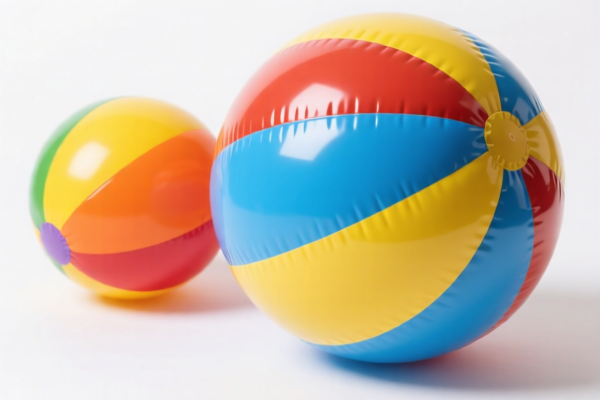| HS Code | Official Doc | Tariff Rate | Origin | Destination | Effective Date |
|---|---|---|---|---|---|
| 8411214000 | Doc | 55.0% | CN | US | 2025-05-12 |
| 8411218000 | Doc | 55.0% | CN | US | 2025-05-12 |
| 7326908688 | Doc | 82.9% | CN | US | 2025-05-12 |




Propeller
A propeller is a rotating fan blade used to convert rotational motion into thrust. It is a type of dynamic reaction engine commonly found in vehicles that operate in air or water.
Material
Propellers are constructed from a variety of materials, chosen for strength, weight, and resistance to corrosion and erosion. Common materials include:
- Wood: Historically used, particularly for smaller aircraft. Lighter and easier to shape but requires significant maintenance.
- Aluminum Alloys: A common choice for many aircraft propellers due to their good strength-to-weight ratio and relatively low cost.
- Composite Materials: Increasingly popular, using materials like carbon fiber reinforced polymers. Offer high strength, low weight, and improved fatigue resistance.
- Steel: Used in larger marine propellers or in areas requiring high durability.
- Brass: Often used for smaller marine propellers.
Purpose
The primary purpose of a propeller is to generate thrust, which propels a vehicle forward. This is achieved by accelerating a mass of air or water backward, in accordance with Newton’s Third Law of Motion (for every action, there is an equal and opposite reaction).
Function
The propeller functions as a rotating airfoil. As the blades rotate, they create a pressure difference between their front and back surfaces. This pressure difference generates both thrust and torque.
- Blade Angle (Pitch): The angle of the blades is crucial. A higher pitch generates more thrust at lower speeds, while a lower pitch is better for higher speeds.
- Rotation Speed (RPM): The speed at which the propeller rotates also affects thrust and efficiency.
- Number of Blades: More blades generally produce more thrust but also increase drag.
Usage Scenarios
Propellers are utilized in a wide range of applications:
- Aircraft: Most small to medium-sized airplanes use propellers driven by piston engines or turboprops.
- Marine Vessels: Ships, boats, and submarines employ propellers for propulsion.
- Fans & Ducted Fans: Smaller propellers are used in cooling fans, ventilation systems, and hobby drones.
- Wind Turbines: Although operating in reverse, the principle is similar - converting wind energy into rotational motion.
Common Types
- Fixed-Pitch Propellers: The blade angle is fixed and cannot be changed in flight. Simpler and less expensive.
- Constant-Speed Propellers: Maintain a constant rotational speed regardless of engine power or airspeed, optimizing engine performance. Blade angle is automatically adjusted.
- Variable-Pitch Propellers (Controllable-Pitch Propellers): The pilot can manually adjust the blade angle to optimize performance for different phases of flight (takeoff, climb, cruise, descent).
- Reversible Propellers: Can rotate in both directions, used for braking and maneuvering ships.
- Contra-Rotating Propellers: Two propellers rotating in opposite directions on the same axis, increasing efficiency and reducing torque.
- Ducted Propellers (Fan): Propellers enclosed within a shroud (duct), improving efficiency and reducing noise.
Based on the provided information, the declared goods "propeller" can be classified under the following HS codes:
- 8411214000: Turbojets, turbopropellers and other gas turbines, and parts thereof: Turbopropellers: Of a power not exceeding
1,100 kW : Aircraft turbines. This HS code covers turbopropellers specifically designed for aircraft, with a power output not exceeding 1,100 kW.- 84: Chapter 84 – Nuclear reactors, boilers, machinery and mechanical appliances; parts thereof.
- 11: Heading 11 – Steam or other vapour generating boilers.
- 21: Subheading 21 – Other.
- 40: Other.
- 8411218000: Turbojets, turbopropellers and other gas turbines, and parts thereof: Turbopropellers: Of a power not exceeding
1,100 kW : Other. This HS code also covers turbopropellers, but for those not specifically classified under 8411214000 (e.g., different applications or power outputs).- 84: Chapter 84 – Nuclear reactors, boilers, machinery and mechanical appliances; parts thereof.
- 11: Heading 11 – Steam or other vapour generating boilers.
- 21: Subheading 21 – Other.
- 80: Other.
Tax Information:
Both HS codes 8411214000 and 8411218000 share the same tax details:
- Basic tariff: 0.0%
- Additional tariff: 25.0%
- Additional tariff after 2025.4.2: 30.0%
- Total tariff: 55.0%
According to the provided reference material, the HS code options related to 'propeller' are limited, with only the following 2 found.
Customer Reviews
No reviews yet.